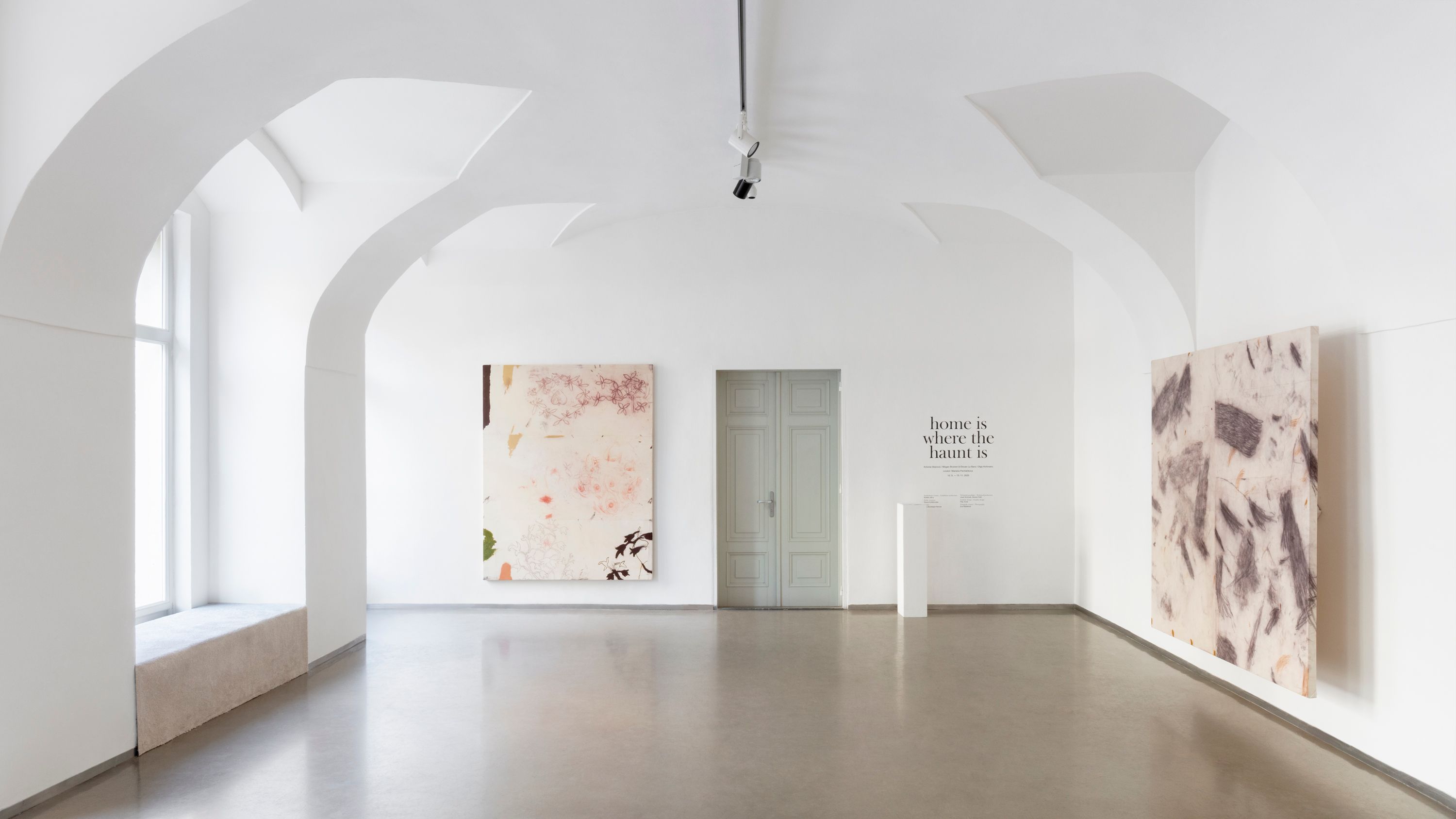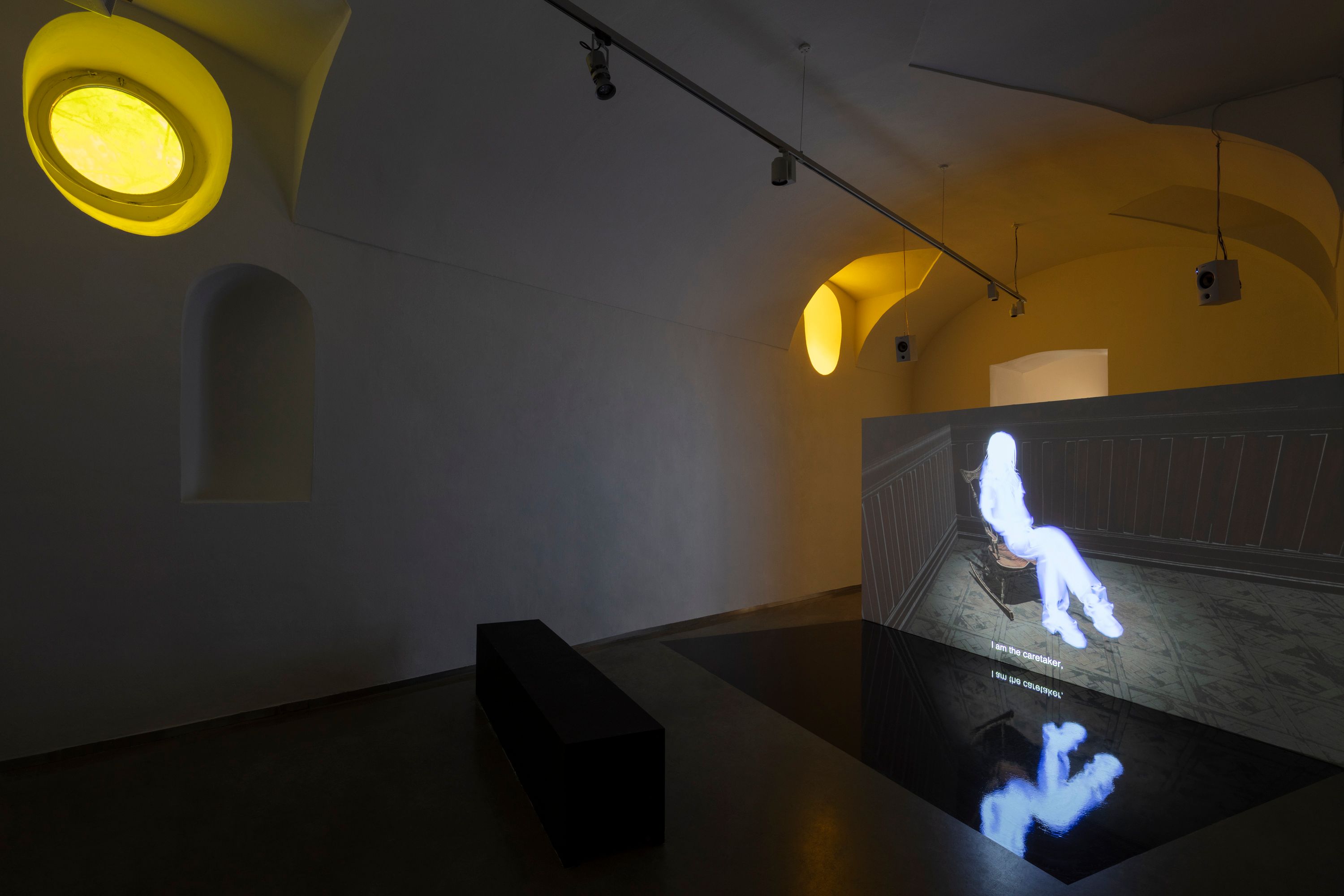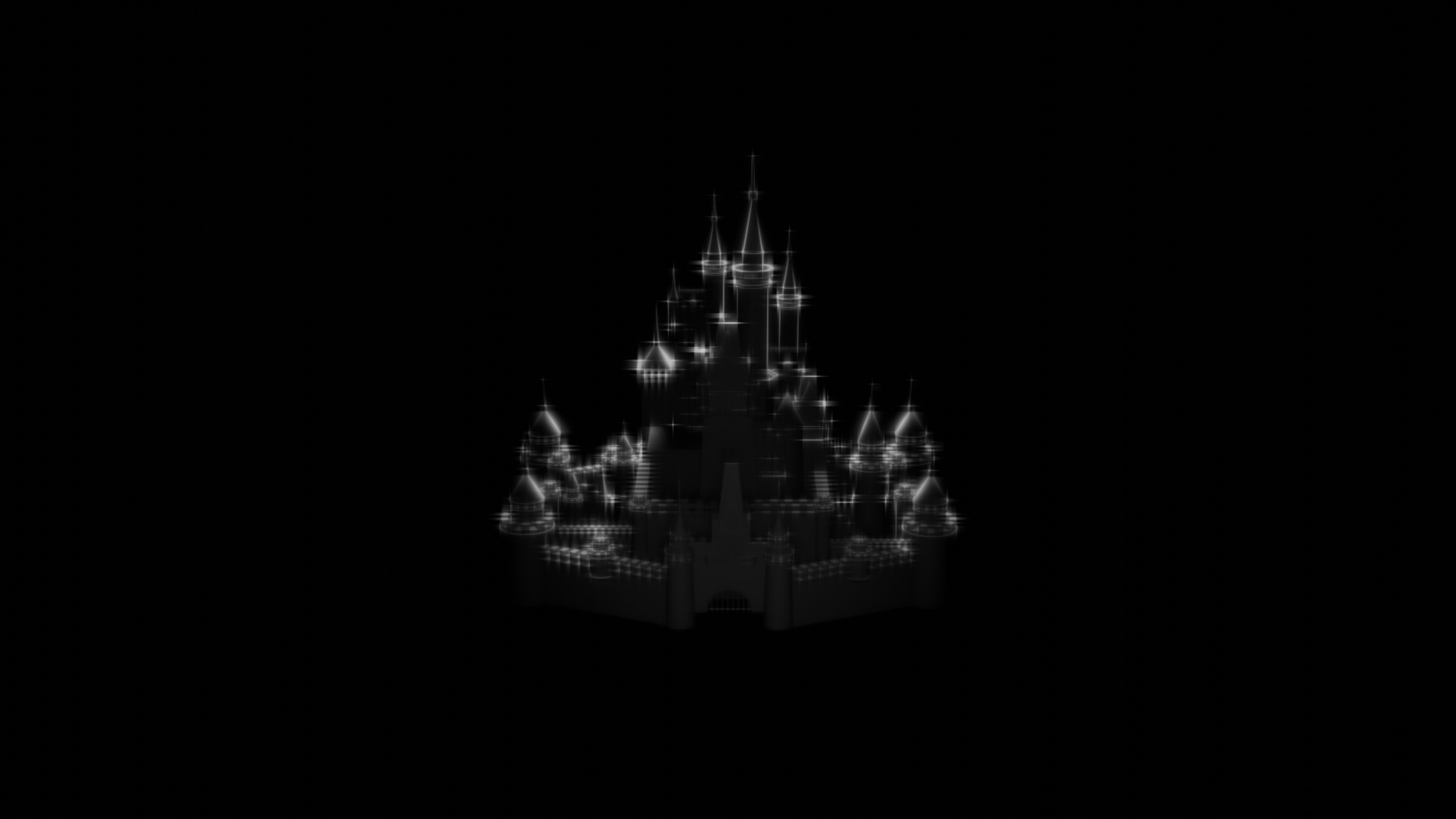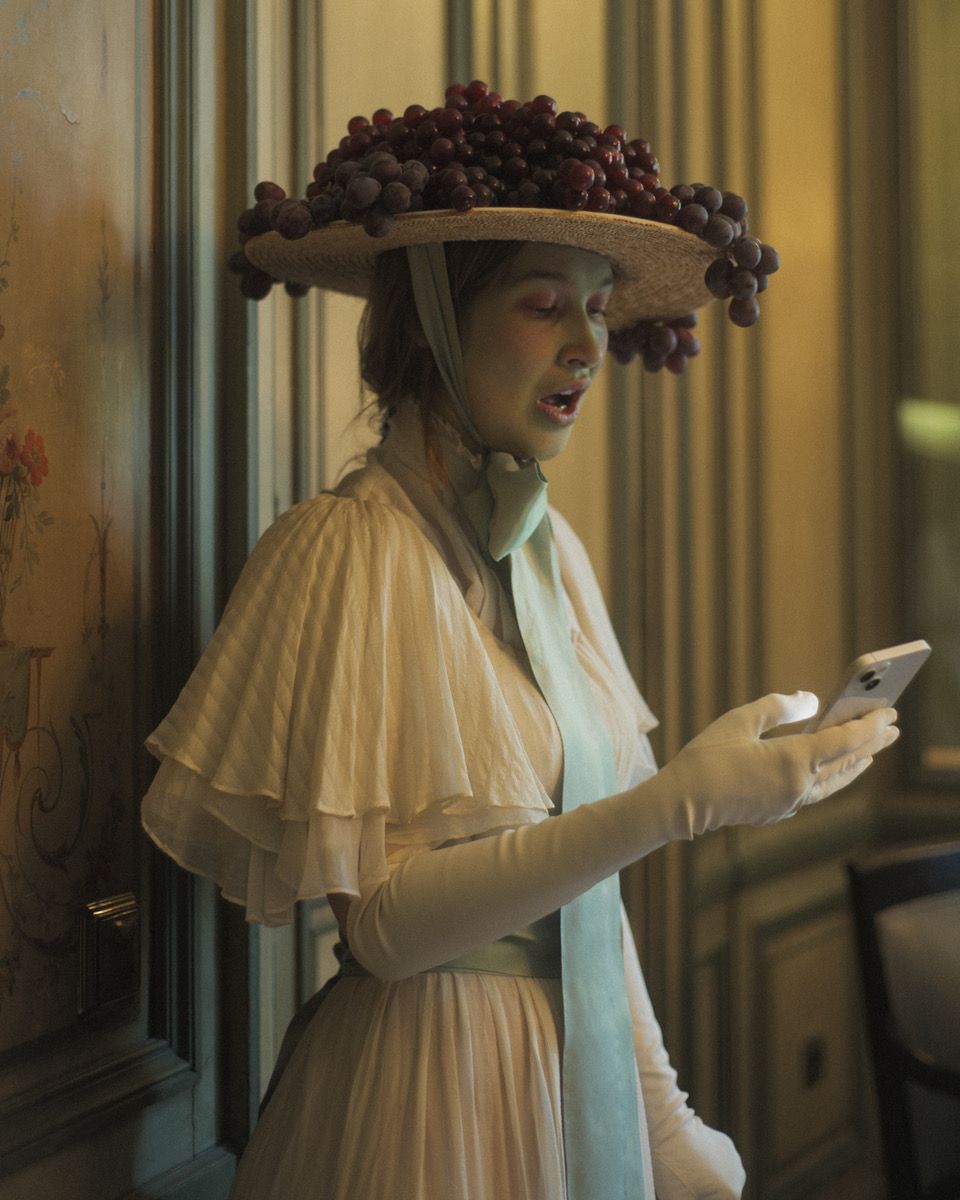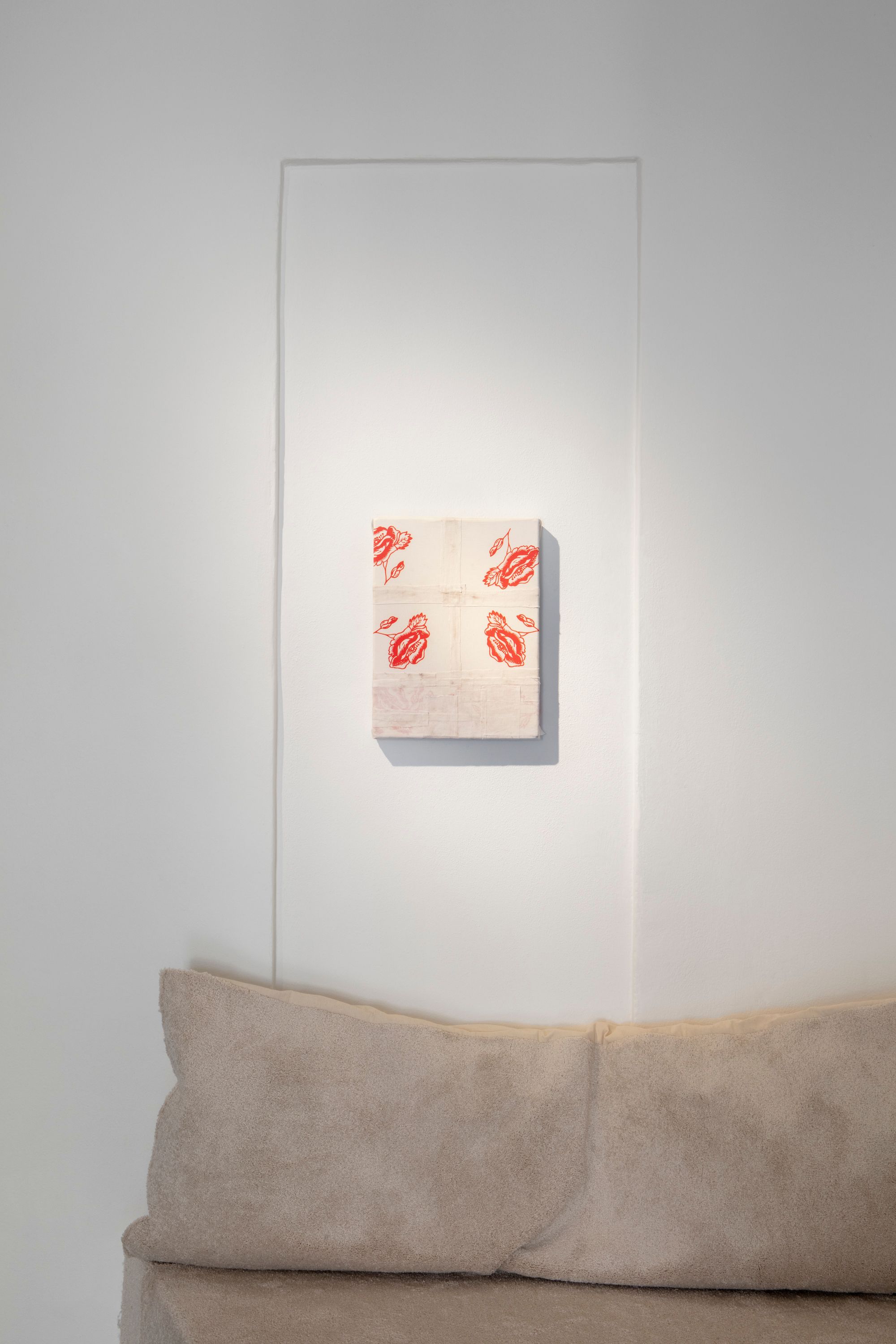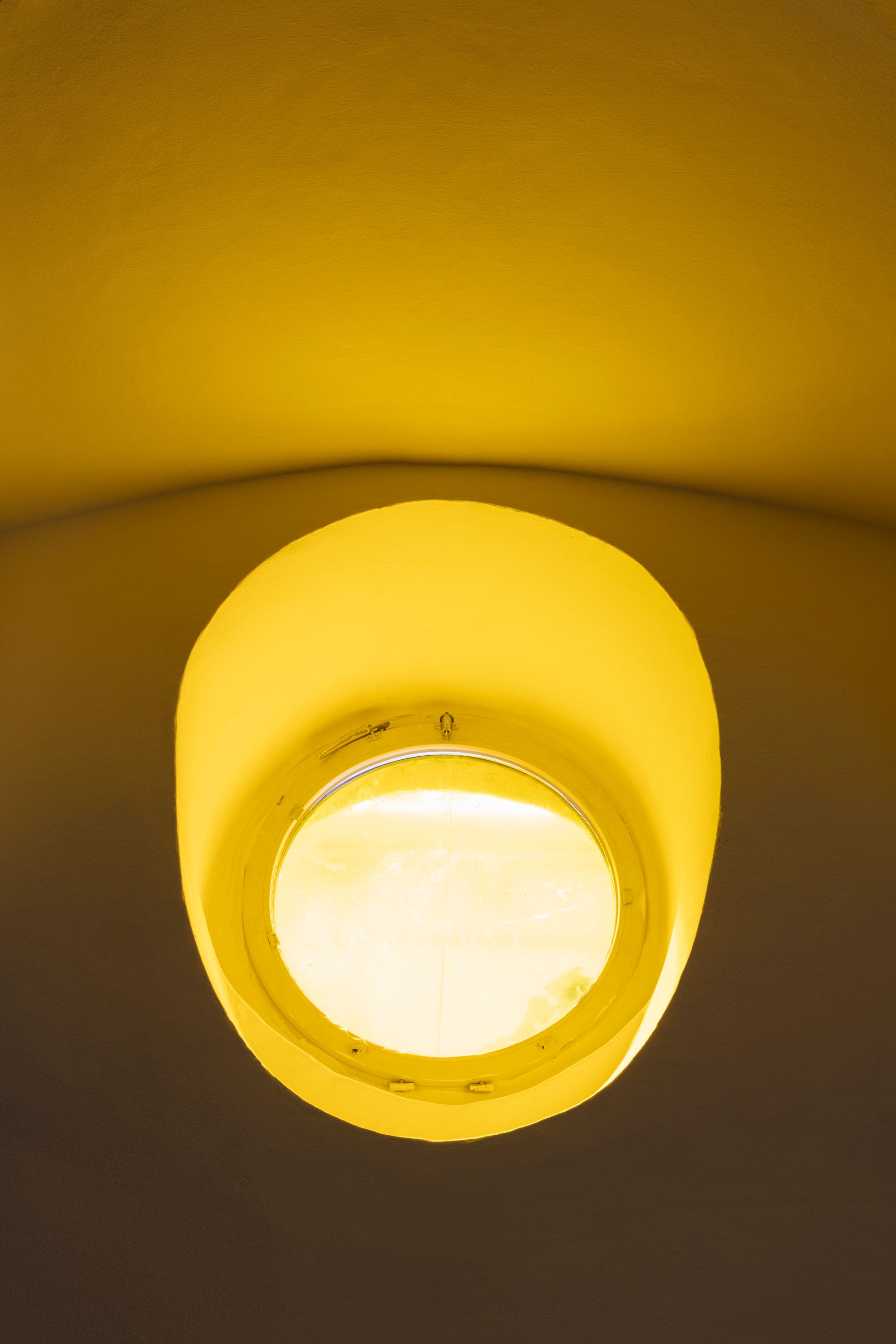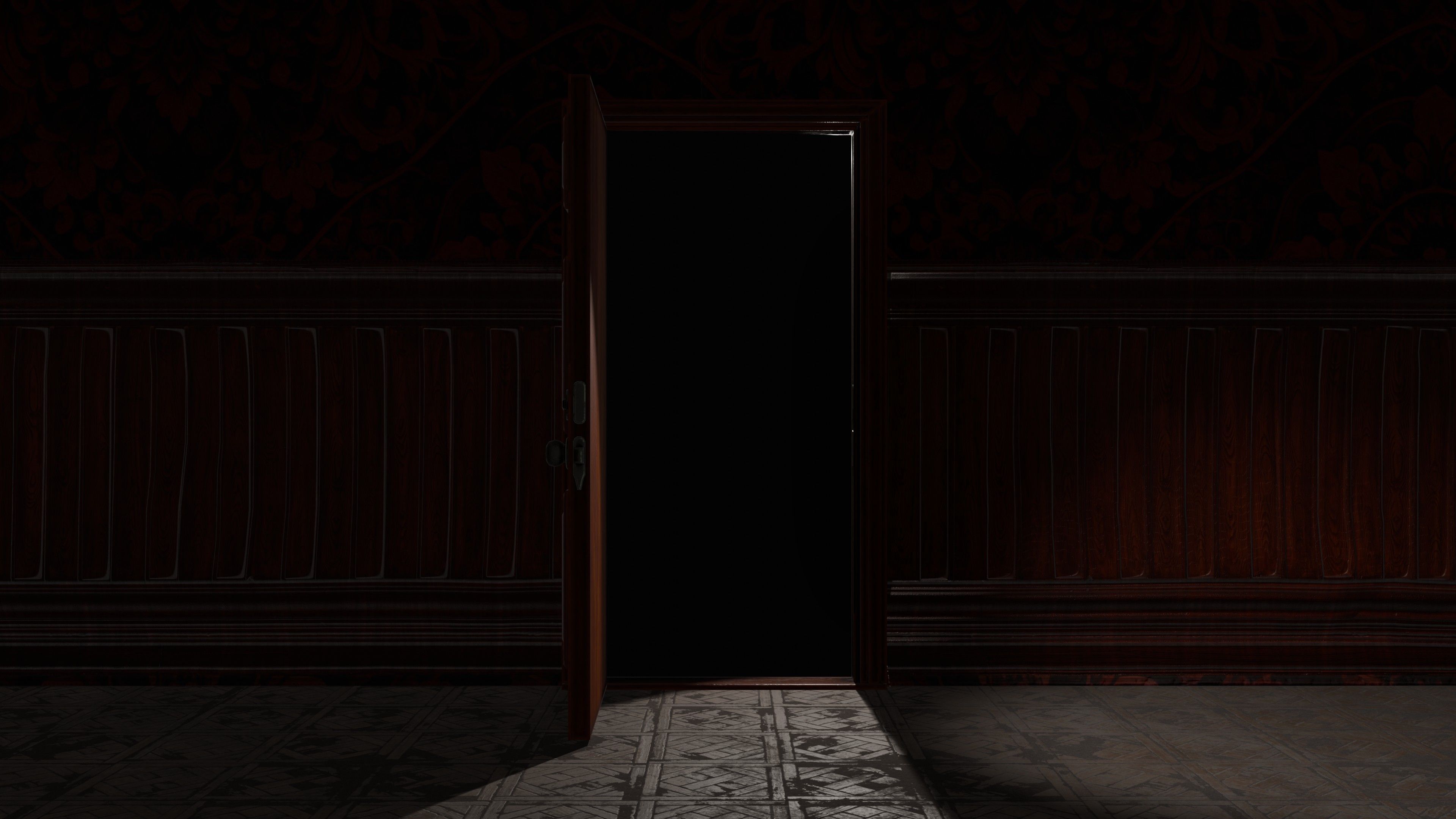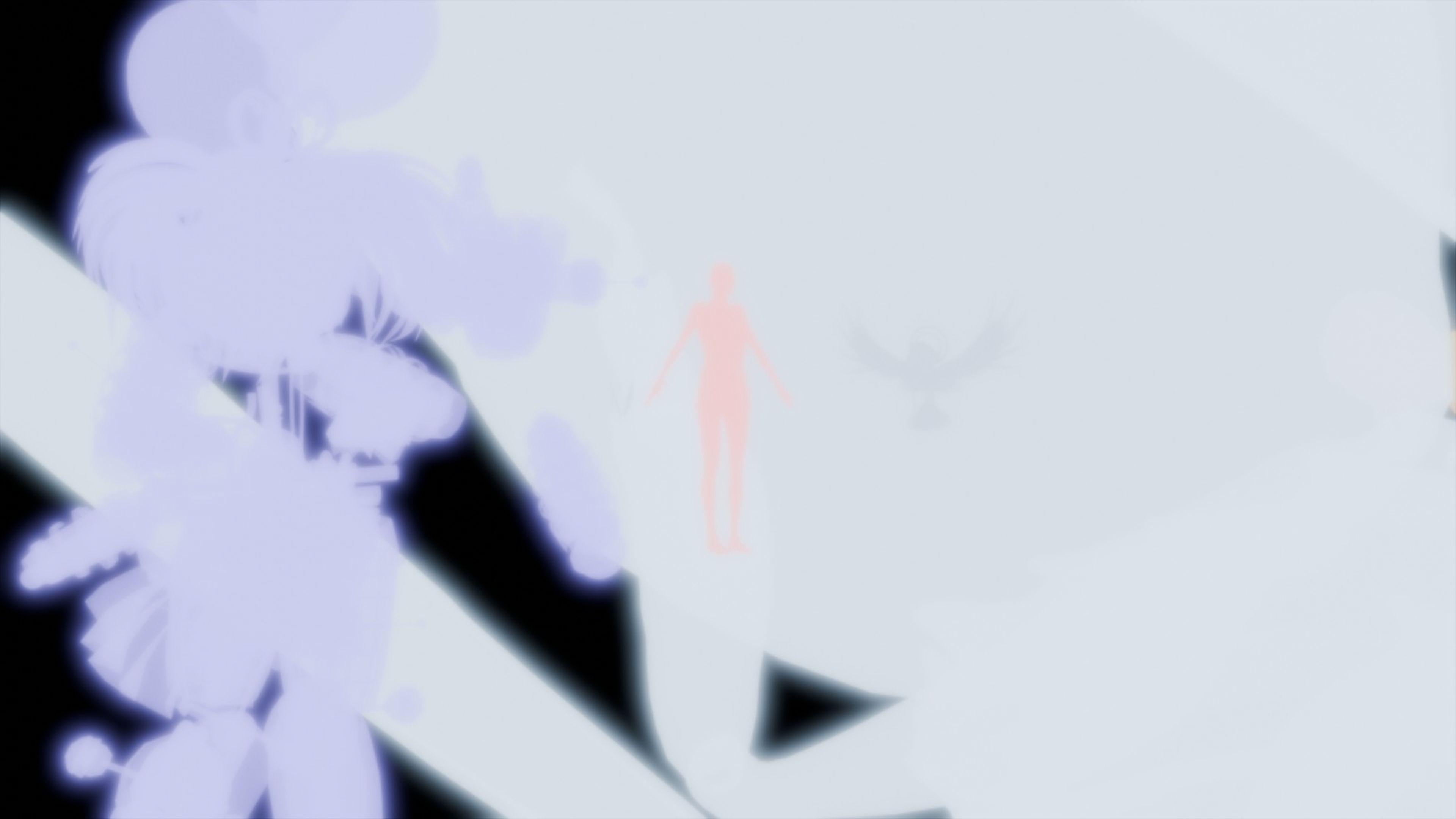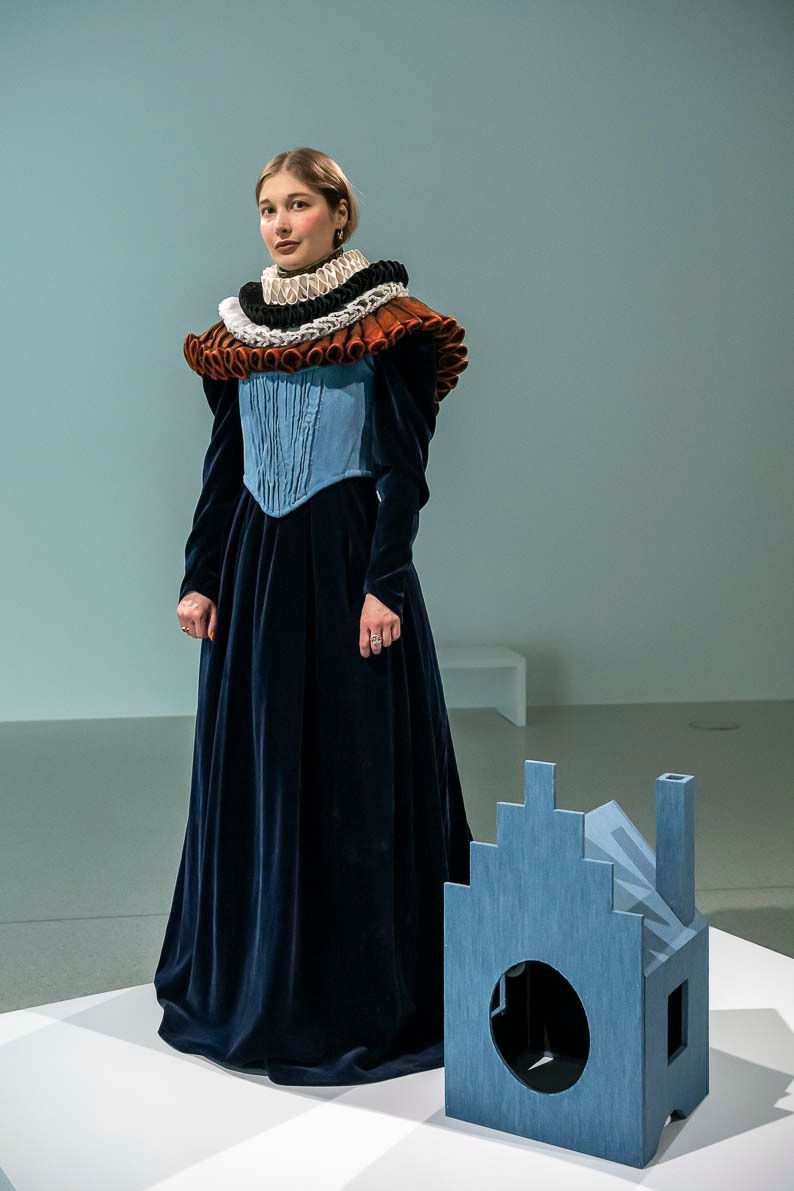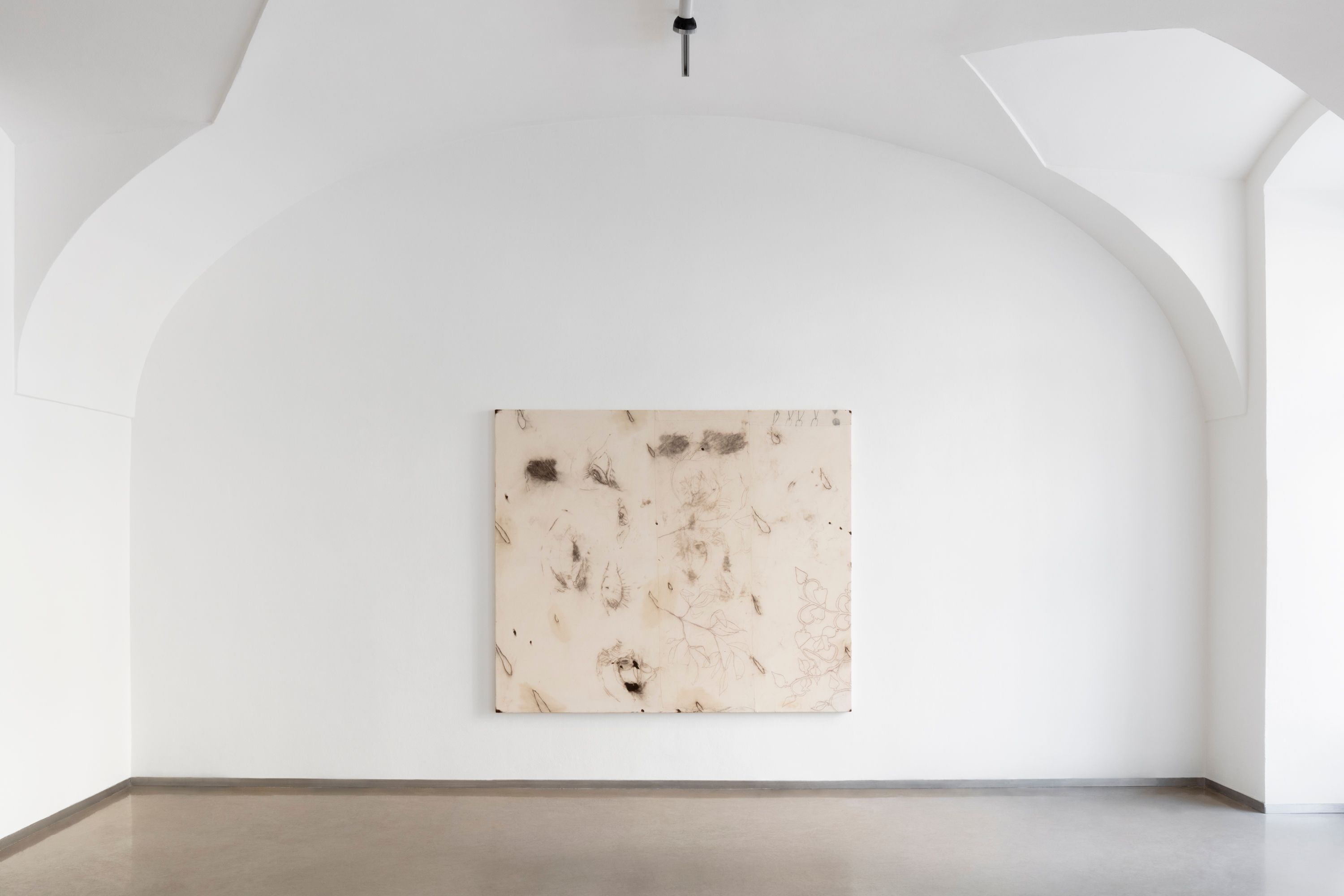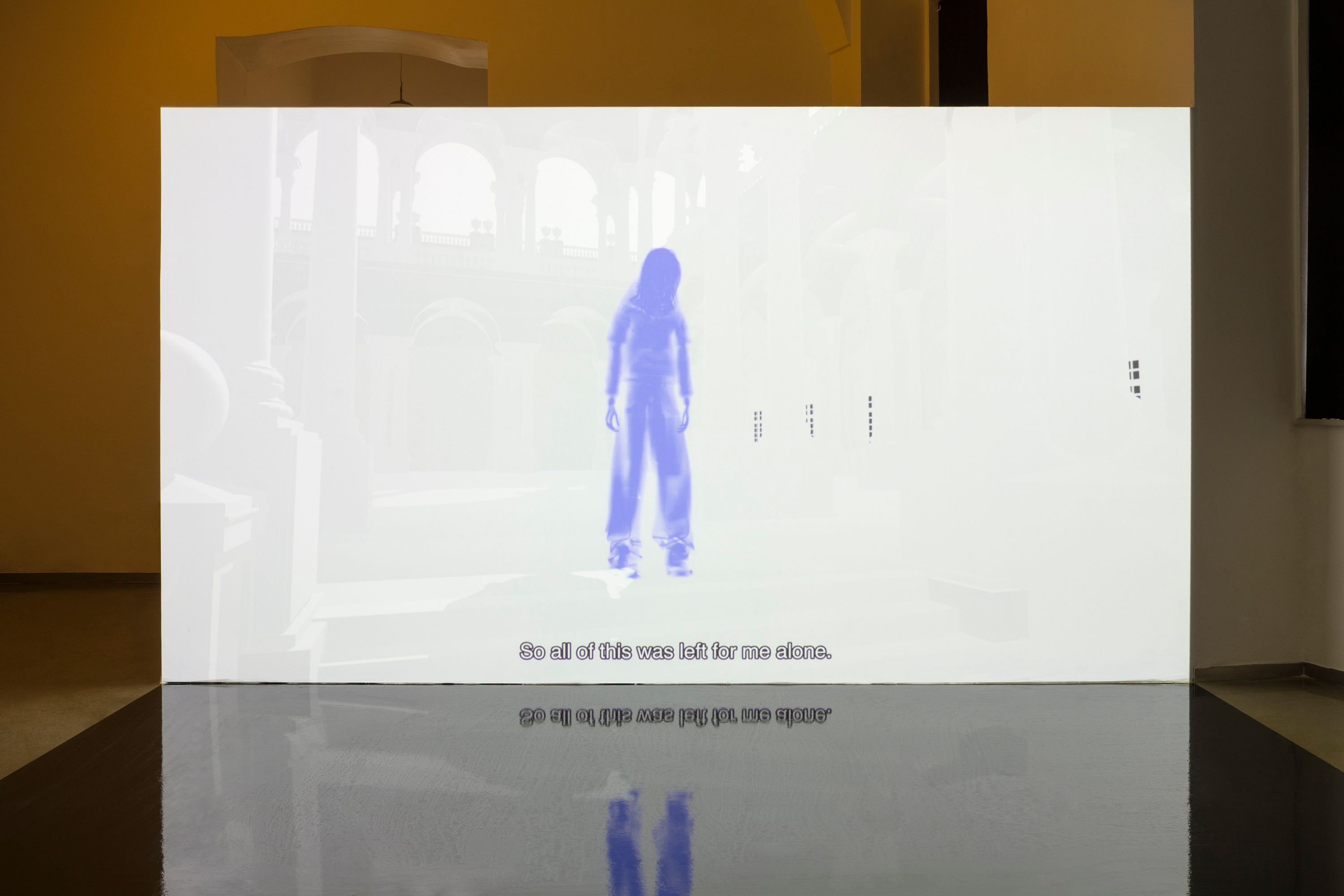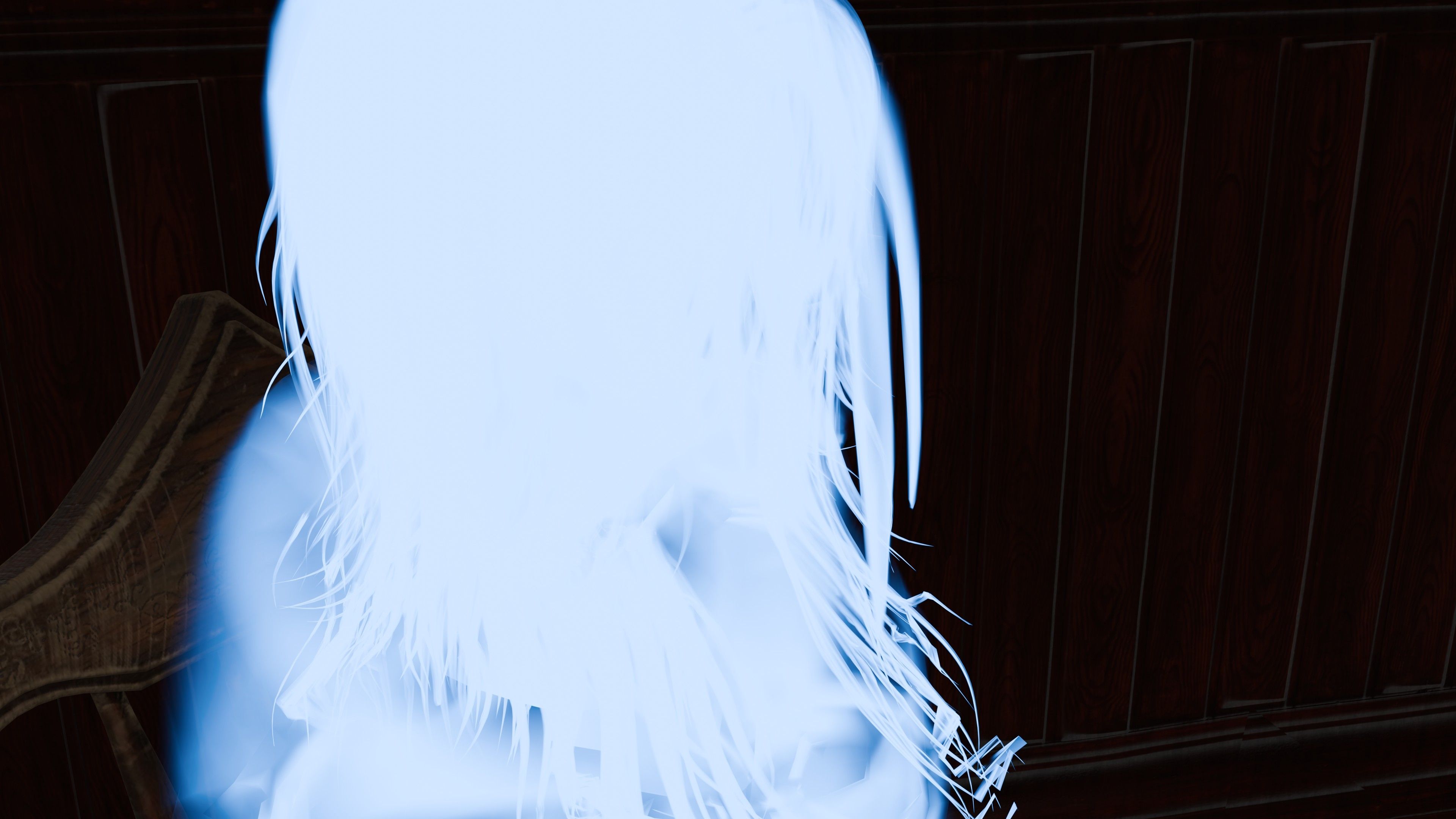
10 09
08 11
2025
home is where the haunt is
Antonie Stanová, Olga Hohmann, Megan Bruinen & Elouan Le Bars
Curated by Mariana Pecháčková
The question “If you were a ghost, where would you like to haunt?” features in the film Recital Hall by the Dutch-French duo Megan Bruinen and Elouan Le Bars. It immediately transports viewers into the abandoned spaces of a virtual palace, where silence mingles with echoes of the past. These rooms might well be filled with the melancholic songs of another exhibiting artist, German writer and performer Olga Hohmann. Her vocal compositions offer a sense of familiarity and comfort, yet at the same time evoke a creeping uncertainty — nostalgia for something lost, strangely familiar, and no longer there. In his now-iconic concept of hauntology, cultural theorist and philosopher Mark Fisher reminds us that the word haunt refers not only to a place of dwelling, but also to that which penetrates and disrupts it. This very ambiguity becomes central to the atmosphere of the exhibition.
Four years after her last solo show at Kvalitář, Antonie Stanová returns with home is where the haunt is, revisiting her earlier figurative works and her personal archive of drawings and motifs. This time, the nature of her paintings engages more directly with memory — its rearrangement and distortion, shaped by the passage of time as well as the physical and mental states of its bearers. Drawing, with its immediacy and speed, allows for a freer, more intuitive flow through space. The delicacy of charcoal enhances the dreamlike quality of the narrative, where past, present, and future planes intersect. The collage-like structure of her canvases, stitched together from individual fragments, disrupts linear time and opens up an experience akin to wandering through virtual spaces. In such spaces, the absence of fixed boundaries makes possible new ways of forming memory and recollection. Traces of the past — voice and text messages, undelivered images, deleted chats, or shared locations — gradually lose their anchoring. They can be rearranged, overlaid, erased, or layered anew. This interplay of emptiness and form allows painting to function much like the digital realm: distorting, bending, and recycling visual and textual records while reviving the ghosts of the past.
In Hohmann’s audio piece, performed on period media, her resonant voice repeatedly recites the phrase “Remembering the future, foreseeing the past.” Accompanied by a gentle melodic line, it emerges like an echo from memory, without clear beginning or end. Fisher describes sound in the context of hauntology as a form of listening to what is no longer there — the voice becoming the echo of a recording that can never fully guarantee presence. Originally created for a performative reading at the exhibition opening, the piece acts here as a ghost of the past, appearing and vanishing for a fleeting moment. In Recital Hall, an avatar wanders aimlessly through the empty chat rooms and halls of the former online platform The Palace — once a lively gathering place for “vampires, scripters, and wizards.” Today, however, it feels characteristically deserted. To the sound of a melancholic melody, suffocating absence dissolves into a white mist in which the ghosts of former avatars occasionally flicker. Bruinen and Le Bars explore virtual nostalgia and fragmented storytelling, intertwining them with archival materials and insights gathered during their residency in Japan — a country where the boundaries of reality are known to dissolve. Like the spectres described by theorist and semiotician Roland Barthes, digital entities exist at the threshold of presence and absence, past and present, and thus exert a direct influence on our perception of the world.
The recurring motif of eyes in Stanová’s paintings refers both to Renaissance studies of the human body and to her earlier interest in the connection between anatomy and botany. Beyond their emotional expression, however, these eyes embody the uncanny gaze of the image — the feeling of being constantly watched. The ghosts of the past also take the form of the artists’ grandmothers, appearing separately as protagonists in Stanová’s diptych and Hohmann’s audio work. For both artists, memories are transformed into rhythms that shape the works themselves. Stanová extends the collage-like quality of her paintings by layering in materials once used by her grandmother — such as cotton kitchen towels — with the knowledge that the resulting piece is unsellable and destined to remain in her personal archive. Hohmann, meanwhile, addresses memory and intergenerational trauma: although her grandmother, at the end of her life, no longer recognized her loved ones, she still remembered the simple melodies and songs she had sung throughout her life. Collective memory is transfigured into murmur — Hohmann’s quiet humming filling the gallery space. Here, music, film, and painting function as ghostly media: vivid images of absence that persist even when the body, the voice, or the moment has passed.
home is where the haunt is thus becomes a meditation on what no longer exists — an absence that nonetheless asserts its presence through its effects. As in 19th-century Romanticism, the ruins of virtual worlds, memories, and sounds become nostalgic vessels, recalling the past in their grandeur and testifying to the supremacy of time over human forces.
The exhibition title is adapted from Mark Fisher’s essay of the same name. Olga Hohmann’s audio installation was created in collaboration with Danish DJ Courtesy and musician Marianne Angel.
